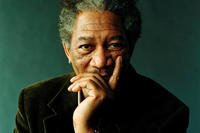Retired 1st Sgt. Mark Matthews was a soldier who saw the U.S. Army evolve from horse-mounted cavalry to diesel-driven, heavily armored tanks. His life connected three centuries, along with every conflict from the American Frontier Wars to World War II -- and he was able to tell people about all of it well into the 2000s.
Matthews first enlisted in the Army in 1910, where he served alongside American Indian scouts in western territories that had yet to become states. He continued his career on the U.S. southern border during World War I and in the Pacific Theater of World War II. Despite his advanced age, he was a healthy man for most of his life, but a bout with pneumonia struck him suddenly and he died on Sept. 6, 2005, at age 111.

In the years following the Civil War, some Black freedmen who fought in the conflict stayed in the Army. Others would follow, trying to make careers out of soldiering like so many other Americans. In 1866, Congress allotted for six all-Black regiments of about 1,000 soldiers each to help rebuild the country. Many of these troops were sent West to help protect settlers, build forts and roads, protect the national parks and map the wild areas of the frontier lands. They also fought the Native tribes in the Southwest and Great Plains.
Legend has it that the American Indian tribes who fought these "Buffalo Soldiers" gave them their now-legendary nickname. They called the Black troops "buffalo" soldiers because of their thick, curly hair, which resembled the coat of the American bison, colloquially called buffalo by Americans. Since the bison were known for their fighting spirit and the Black men of the U.S. Army knew the high esteem the Natives had for the herds, they didn't take offense to the name. Instead, they embraced it. By the time Matthews joined the Army, the name referred to all of the regiments created in 1866.

Matthews was born in Alabama in 1894 and grew up in Mansfield, Ohio. His skills on horseback developed early in his life, as he delivered newspapers on a pony. He was first introduced to members of the 10th Cavalry Regiment while working at a Kentucky racetrack when he was 15 years old. When they told him they were riding horses wherever they went, he lied about his age to join them. Matthews was sent to Fort Huachuca, Arizona, for his first duty station in 1910 at age 16. Although the fiercest fighting of the Plains Wars was over, the Army was still using Native scouts, and they taught him everything they knew about riding horses.
Though the frontier closed in 1890, the Buffalo Soldiers moniker carried on. The regiments would continue to fight Natives until the last battle of the American Frontier Wars, against the Yaqui tribe of New Mexico, ended in a U.S. victory in 1918. Matthews was with the 10th Cavalry when Gen. John J. Pershing led the Punitive Expedition into Mexico in 1916, hot on the trail of Mexican bandit Pancho Villa. When the U.S. entered World War I, they fought Native tribes near Nogales, Sedona, along with Mexican forces who were being advised by Germans.

Matthews' skills on horseback served him well in the interwar years. He was transferred to Fort Myer in Washington, where he taught new recruits how to ride, tended the stables for first lady Eleanor Roosevelt, escorted King George VI and his wife during a state visit, and put on horsemanship shows to sell war bonds when the United States entered World War II. Although 49 years old at the time, he even fought in the Battle of Saipan.
Matthews retired from the Army in 1949, the year after President Harry S. Truman signed an executive order officially desegregating the U.S. armed forces. In 1951, the 24th Infantry Regiment in Korea became the last segregated unit to see combat. By the end of that year, all the Buffalo Soldier units were disbanded.
Matthews would be the oldest Buffalo Soldier living until his death at age 111. He was interred at Arlington National Cemetery in September 2005. The last living Buffalo Soldier was Rev. Robert W. Dixon Sr., a 103-year-old World War II veteran who died on Nov. 15, 2024.
Want to Learn More About Military Life?
Whether you're thinking of joining the military, looking for post-military careers or keeping up with military life and benefits, Military.com has you covered. Subscribe to Military.com to have military news, updates and resources delivered directly to your inbox.
















